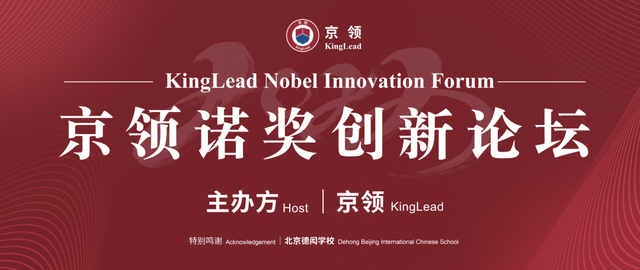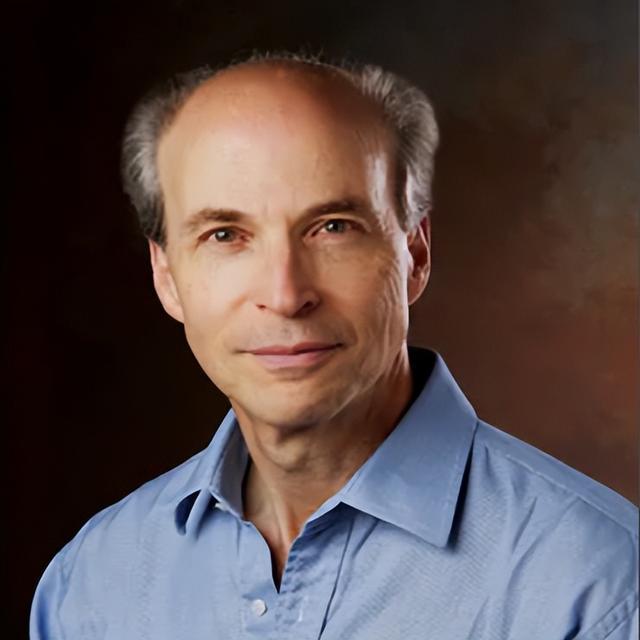2022年5月30日14:00,京領諾獎創新論壇暨國際學校頒獎典禮盛大開幕,論壇堅持學術引領、創新驅動,旨在助力我國國際化創新人才培養事業發展。
本次諾獎創新論壇邀請諾貝爾獎得主與來自哈佛大學、賓夕法尼亞大學、牛津大學、劍橋大學的世界級學者與數十位全國知名國際學校校長齊聚一堂,共話中國國際教育升級發展,暢談創新人才培養。
在來自哈佛大學、賓夕法尼亞大學、牛津大學、劍橋大學的世界級學者與數十位全國知名國際學校校長的共同見證下,本次論壇首次發布“京領全球領軍校長”獎項,並爲登上“中國國際學校品牌榜”、“中國國際學校創新榜”、“中國國際學校特色榜”三大榜單的學校頒獎。
同時,論壇重磅發布京領與青苗國際雙語學校、華附國際部、天津英華實驗學校、德勝學校(國際)、北京德闳學校、宏文學校、蘇州工業園區德威聯合書院、AISL哈羅學校、北京市私立彙佳學校、上海新加坡外籍人員子女學校等十所學校聯合發布的十大研究報告,通過多維度分析中國國際學校的整體情況和國際教育發展趨勢,總結剖析標杆國際學校的實踐經驗和辦學成果,幫助國際學校把握未來發展趨勢,幫助家庭做出最適合的擇校選擇。
諾獎得主科恩伯格教授作爲重磅嘉賓進行開幕致辭,分享“高中生應該如何通過學習爲未來作好准備”。
科恩伯格教授
諾貝爾化學獎得主
斯坦福大學終身講席教授
美國國家科學院院士
美國藝術與科學院院士
2006年,科恩伯格教授因對“真核轉錄的分子基礎所作的研究”,獨享諾貝爾化學獎。科恩伯格教授還獲得了許多獎項,包括韋爾奇獎(2001),美國最高的化學獎,利奧波德梅耶獎(2002),法國科學院生物醫學科學的最高獎。科恩伯格教授擔任美國和歐洲國家科學院的院士,並被歐洲大學被授予榮譽學位。
科恩伯格教授作爲諾貝爾化學獎得主、斯坦福大學終身講席教授、美國國家科學院院士、美國藝術與科學院院士,同時也是世界上最著名的化學家之一,在本次論壇中進行了深刻的發言。科恩伯格教授的發言核心在于闡釋——在科學領域探索與發現本身的令人興奮之處,以及基礎研究的重要性。
1
發現新知
Winter Paralympic Games
大家好,我是羅傑·科恩伯格。我是位于加州的斯坦福大學的結構生物學教授,很高興參加諾獎創新論壇,並見證即將發布的中國國際學校系列榜單。
我知道你們很多人都是高中生,也許高中教育即將結束。毫無疑問,你們頭腦裏會冒出一個重要問題,那就是應該學習什麽來爲將來做准備?該走哪條路?如何在未來取得成功?當然,有許多道路可以遵循,我只能講講我在和你們差不多年齡時選擇的道路。
那時,我並沒有特別喜歡學習。但是當我離開大學,開始從事研究工作時,一切都改變了。雖然我並不喜歡死記硬背別人發現的東西,但當我開始自己去發現新知識時,情況就完全不同了。
2
追求本質
Winter Paralympic Games
我想用一些大家都很熟悉的例子來說明科學發現令人興奮的地方。一是X射線的發現,你們肯定知道,這對于許多疾病的診斷和治療都很重要。另一個是抗生素的發現,它消除了細菌性疾病的危害,將人類壽命從35歲延長到70歲。
這兩個發現有什麽共同之處呢?它們都是在追求知識本身的過程中産生的,而沒有考慮知識的應用。這體現出什麽?我會告訴你們這些發現:處理難題的方法不是直接上手解決,而是追求一種對其本質的好奇,這樣其他的困難都會迎刃而解。這解釋了推動我和許多其他人事業發展的必不可少的一步——做基礎研究。
X射線是由威廉·倫琴發現的,倫琴是荷蘭一位紡織商人的兒子。18歲時,他因爲拒絕告發一個畫老師漫畫的同學而被學校永久開除。盡管如此,他還是繼續了傑出的學術生涯,獲得了德國沃爾茨堡大學的物理學教授職位。一百多年前的1895年,他試圖通過研究來更好地理解放電和陰極射線管。他偶然注意到實驗室後面的熒光屏放電時發出的微弱的光,當他把手放在陰極射線管上阻擋熒光屏上出現的光束時,他看到了自己的手骨架。這種在當時被稱作倫琴射線的物質,也就是我們大多數人所知的X光,幾乎有著立竿見影的效用。從那時起,X射線就在頭部治療等方面發揮著重要作用。由于這一發現,倫琴在1901年獲得了第一屆諾貝爾物理學獎。
青黴素的發現是一個更爲人熟知的故事,我相信你們很多人都聽說過亞曆山大·弗萊明的經曆,他在實驗室的培養皿中培養細菌。有一天,他注意到培養皿上長出了一種黴菌,在黴菌周圍有一圈死細菌。他知道黴菌産生的某種物質一定殺死了細菌,但他不能將有效成分分離出來。這種黴菌很不穩定,他也沒有足夠的經驗來解決這個問題。
十年後,牛津大學的霍華德·弗洛裏和恩斯特·錢恩對細菌細胞壁的合成很感興趣。他們想要了解細菌是如何用一種主要由糖、碳水化合物和一些蛋白質組成的保護膜環繞自己的。弗洛裏是澳大利亞一個鞋匠的兒子。恩斯特·錢恩是歐洲納粹壓迫下的難民。錢恩有著過目不忘的記憶力才,也是一個音樂天才。他記得曾經讀過一本亞曆山大·弗萊明寫的晦澀的出版物,描述了一種可以殺死細菌的材料,他想知道這對研究細菌細胞壁的合成是否有用。他是一個專業娴熟的生物化學家,很快就找到了分離的有效原則。他發現它是一個小分子,他和弗洛裏都明白這其中的醫學意義。弗洛裏和錢恩,還有弗萊明,在1946年被授予了諾貝爾醫學或生理學獎。
正如我所說,這兩個發現說明了基礎研究的力量。這些例子並不罕見。的確,每一個發現都來自于意外,來自于偶然。因爲,顯而易見,發現是不能計劃的,它們只能通過偶然的觀察而産生。在基礎研究過程中,它們幾乎總是會發生,這也就是我所說的對知識本身的追求。
3
獨立試錯
Winter Paralympic Games
現在,你可能會問,這一切對你意味著什麽?正如我說的,答案就是由發現帶來的興奮。我認爲這是最值得的。在我自己的生活中,沒有什麽比那些可遇不可求的事件更讓我滿意,我執著追求于科學問題並最終找到重大發現,給人以重大啓示。走向新知識、新發現,這些總是有重要用途的。事實上,正如其他人所說,研究只有一種,應用研究和尚未被應用的研究。我們的每一個發現最終都會被證明具有深遠的意義,或者提高人類的生活質量、促進人類進步。
最後,在場的老師、家長們可能會問,我們如何幫助年輕人實現科學探索與發現的重要目標,並讓他們從中獲得滿足感?答案是鼓勵年輕人獨立,讓他們發現自己的道路,讓他們犯錯誤,然後自己糾正,鼓勵他們堅持不懈地追求未來。
我記得一位對我很重要的老師曾告訴我,唯一要做的事,就是每天去實驗室然後失敗。他的意思是,學會意識到雖然大多數實驗都會失敗,但總有一天會成功。而我想說,如果你們每個人都追求知識,並且持之以恒,你也會獲得最終的滿足感。謝謝大家。
English Version
1
Discovery
Winter Paralympic Games
Good day. I am Prof. Kornberg. I am a Professor of Structural Biology at Stanford University in California. I’m pleased to join you for the China International School Competitiveness Ranking Conference.
I know many of you are high school students, perhaps near the end of your high school education. One important question in your mind is doubtless what to study to prepare yourselves for the future? What path to follow? How to succeed in the future? There, of course, many paths to follow. I can only speak about the path I chose when I was at a similar age.
At that time, I didn’t particularly enjoy studying. It all changed when I left college and began a career in research. Although I hadn’t greatly enjoyed learning, perhaps, being required to memorize what had been found by others, it was a different matter when I undertook to discover new knowledge myself.
2
Pursuit of Essence
Winter Paralympic Games
I would like to illustrate the thrill of discovery, of finding new knowledge with a couple of examples actually well known to you. One is the discovery of X-rays, as you are doubtless aware, important for diagnosis and for treatment of many medical conditions. The other was the discovery of antibiotics, which eliminated the scourge of bacterial disease, extending the human lifespan from approximately 35 to 70 years.
What these two discoveries have in common? They were made in the pursuit of knowledge for its own sake, with no idea of an application. What emerges from the brief accounts? I will give you these discoveries. The way to solve a difficult problem is not to solve it directly, but rather to pursue a curiosity about nature, and the rest will fall. It illustrates the imperativeness which has driven my own career, and that of many others — do basic research.
X-rays were discovered by Wilhelm Roentgen, Roentgen was the son of a textile merchant in the Netherlands. He was expelled, permanently expelled, from school at the age of 18, when he refused to inform on a classmate who drew caricatures of his teachers. Nevertheless, he went on to a distinguished academic career, gained the chair in physics at the University of Vortsburg in Germany, where, in 1895, a little over a hundred years ago, he was studying, attempting to better understand the electrical discharge and a cathode ray tube. He happened to notice on a fluorescent screen in the back of his laboratory a faint glow upon the electrical discharge. When he placed his hand over the cathode ray tubes, to prevent the appearance of the glow on the fluorescent screen, he saw the skeleton of his hand. The application of what was then termed Roentgen rays, or most of us know as X-rays, was almost immediate. Immediate to medicine on heads, of course, remained of great significance ever since. For this discovery, Roentgen was awarded the 1st Nobel Prize in Physics in 1901.
The discovery of penicillin is a more familiar story, and I’m sure that many of you have heard of the experience of Alexander Fleming, who was growing bacteria on Petri dishes in his laboratory. One day, he noticed a mold growing on the petri dish, and a circle of dead bacteria around the mold. He understood that something produced by the mold must be killing the bacteria. He was unable to isolate the active principle. It proved to be unstable, and he was not sufficiently experienced to solve the problem.
Ten years later, Howard Florry and Ernst Chain at Oxford were interested in the synthesis of bacterial cell walls. They wanted to understand how a bacterium surrounds itself with a protective wall, mostly consisting of sugar, carbohydrate, and also some protein. Florry was the son of a shoemaker in Australia. Ernst Chain was a refugee from Nazi oppression in Europe. Chain was also not a genius without a photographic memory and a musical genius as well. He remembered having read an obscure publication by Alexander Fleming describing the material killed bacteria, and he wondered if it could be useful in their investigation of bacterial cell wall synthesis. He was a skilled biochemist. He soon isolated the active principle. He discovered it was a small molecule. He and Florry appreciated the profound medical implications. Florry and Chain, along with Fleming, were awarded the Nobel Prize in Medicine or Physiology in 1946.
As I have said, what these two discoveries illustrate is the power of basic research. These examples are not unique. Indeed, every discovery arises from serendipity, from chance. Because, of course, discoveries cannot be planned. They can only come about through chance observations. They will almost invariably occur in the course of basic research. what I have described as the pursuit of knowledge for its own sake.
3
Learn from Faults and Errors
Winter Paralympic Games
Now, you may ask, what does all of this mean for you? The answer is, as I said, the thrill of the discovery. I think there is nothing more rewarding. Certainly, something no satisfying in my own life than those rare events, when the dogged pursuit of a problem in science has given away to an important revelation. to new knowledge, to discoveries, which invariably have important applications. Indeed, as others have said, there is only one kind of research. Apply research and not yet apply research. Every discovery we make will eventually prove to have profound implications, or our quality of life for human progress.
Finally, you may ask, indeed, the adults who are present in the room, teachers,parents, may ask, how can we assist young people in achieving this important goal of discovery, in gaining the satisfaction that flows from. And the answer is to encourage independence on the part of young people, to let them discover their own paths, let them make mistakes and correct them on their own, and to encourage persistence in the pursuit of whatever half they may follow.
I recall one of my important teachers explaining the only thing to do, was going to the laboratory and failing every day. By which he meant, try knowing that most experiments would fail, but one day I would succeed. I can only say. But if each and every one of you pursues knowledge and persists in the pursuit, you will gain that ultimate satisfaction as well. Thank you for your attention.


